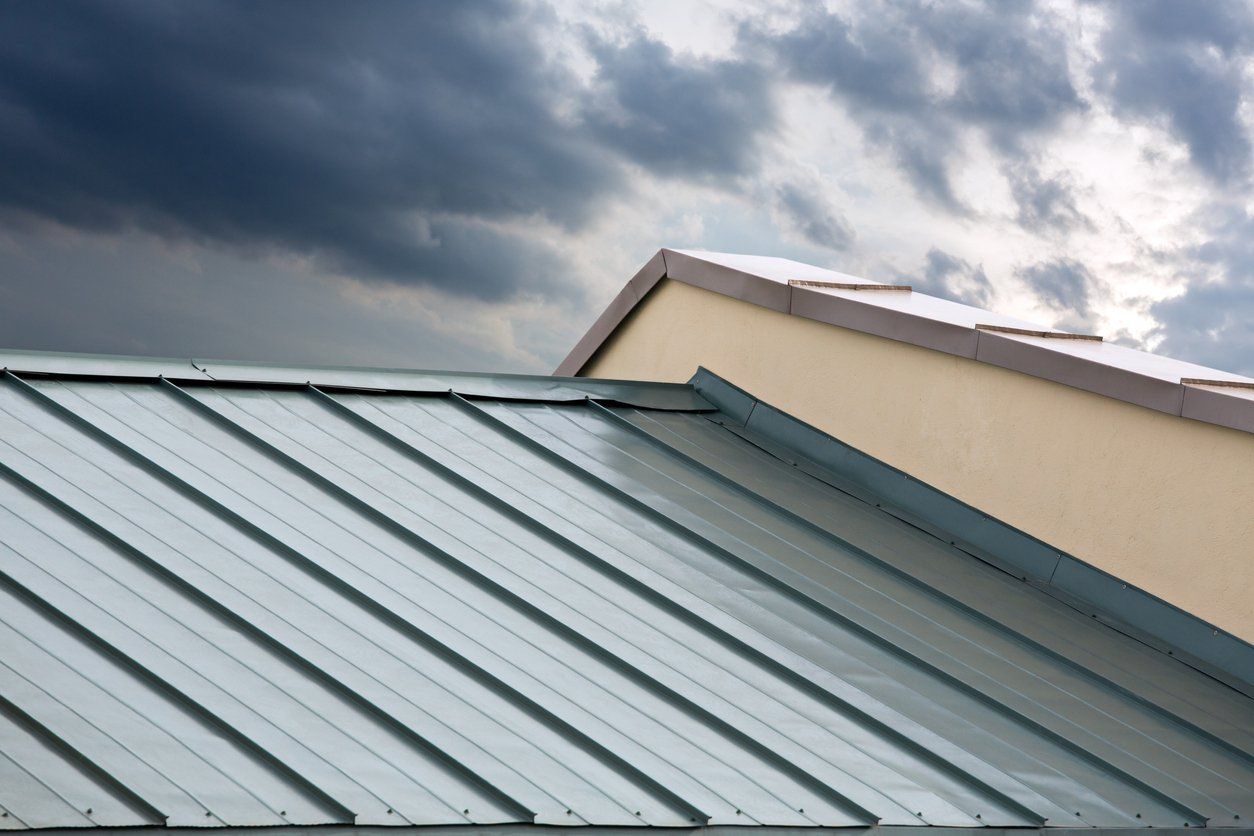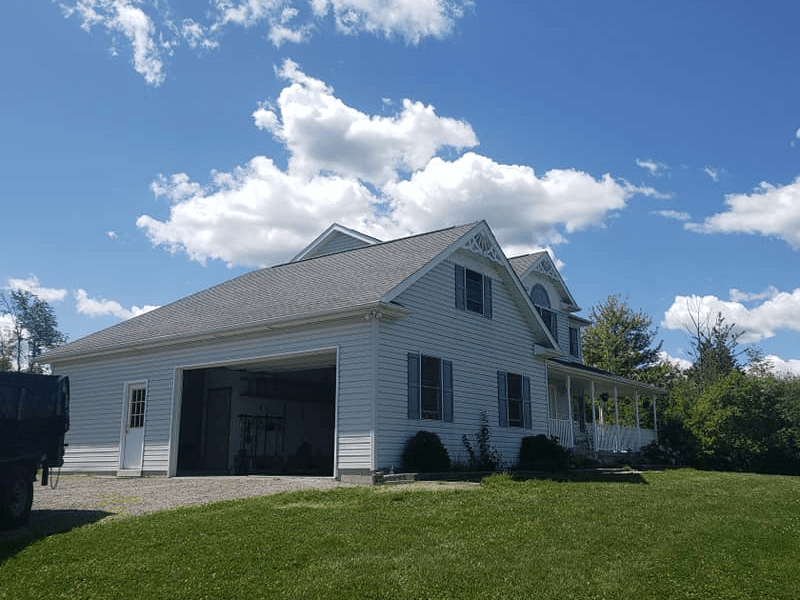Introduction
Windstorms can wreak havoc on homes, causing extensive damage, particularly to roofs. Understanding Wind Damage and Its Implications on Your Roof is crucial for homeowners and property managers alike. Not only does wind damage compromise the integrity of your roofing system, but it also leads to costly repairs if not addressed promptly. In this article, we'll dive deep into the topic of wind damage, exploring its various facets—from identifying signs of damage to understanding repair options available through licensed roofing contractors.
What Is Wind Damage?
Defining Wind Damage
Wind damage occurs when high-speed winds exert pressure on a structure, often leading to physical destruction. The severity can vary based on several factors, including wind speed, roof type, and building materials.
How Wind Affects Roofs
High winds can lift shingles or tiles, dislodge flashing, and even tear off entire sections of the roof. Over time, this can lead to leaks and other structural issues that require immediate attention.
Understanding the Mechanisms of Wind Damage
How Does Wind Cause Roof Failure?
Wind exerts force differently across various roof types. It may create suction above the roof surface while pushing against the sides, leading to potential failure points.
Factors Influencing Wind Damage Severity
- Wind Speed: Higher speeds exacerbate damage. Roof Pitch: Steeper roofs may shed wind better than flat ones. Building Location: Areas known for severe storms are at higher risk.
Signs of Wind Damage on Your Roof
Visual Inspection Checklist
Missing or damaged shingles Bent or broken flashing Loose gutters Visible tears in roofing materialIdentifying Internal Signs of Damage
- Water stains on ceilings Peeling paint around vents Musty odors indicating mold growth
The Importance of Regular Roof Inspections
Why You Should Schedule Routine Inspections
Regular inspections by certified roofing contractors can help catch minor issues before they escalate into major repairs.
Table: Benefits of Regular Roof Inspections
| Benefit | Description | |---------------------------|--------------------------------------------------| | Early Detection | Catching problems before they worsen | | Cost Savings | Preventing expensive repairs | | Increased Lifespan | Extending the life of your roofing system |
Emergency Roofing Services for Wind Damage
What Are Emergency Roofing Services?
These services are designed to address urgent roofing issues caused by extreme weather conditions such as windstorms.
When to Call for Emergency Services?
If you notice significant damage after a storm, don’t hesitate to reach out for emergency roof repair services.
Choosing the Right Roofing Contractors for Repairing Wind Damage
Licensed vs. Unlicensed Contractors: What's the Difference?
Opting for licensed roofing contractors ensures quality work backed by insurance and warranties.
Finding Certified Roofing Contractors Near You
Look for reputable companies with good reviews in your area specializing in storm damage recovery.
List: Qualities of Best Roofing Contractors
- Experience in handling wind damage Positive customer feedback Comprehensive service offerings
Cost Considerations in Roof Repair or Replacement After Wind Damage
Estimating Roof Repair Costs Post-Damage
The cost will vary based on:
- Type of material (asphalt vs. metal) Extent of damage Labor costs in your area
Table: Average Cost Ranges for Common Repairs
| Service | Average Cost Range | |-------------------------------|--------------------------| | Roof Leak Repair | $300 - $1,500 | | Shingle Roof Repair | $200 - $1,000 | | Complete Roof Replacement | $5,000 - $20,000 |
Emergency Roof Leak Repair Services: What You Need to Know
Identifying a Leak Post-Wind Storms
Look for water stains inside your home; these are telltale signs that your roof has sustained damage.
How Quickly Should You Act?
Prompt action is crucial—delaying repairs can lead to more extensive water damage and mold issues.
Understanding Specific Types of Repairs Under Emergency Conditions
Roof Flashing Repair: Why It's Essential After Storms?
Flashing helps direct water away from critical areas like chimneys and valleys; damaged flashing can lead to leaks.
Temporary vs Permanent Repairs: What’s Best?
Temporary fixes may hold up briefly but should be followed up with permanent solutions as soon as possible.
Flat Roof Repair Options After High Winds
Challenges Unique to Flat Roofs
Flat roofs are more susceptible to pooling water which could cause leaks after being compromised by high winds.
Best Practices in Flat Roof Maintenance
Regular inspections and maintenance are key—a proactive approach saves money down the line.
Metal Roofing: Resilience Against Wind Damage
Benefits of Metal Roofing in Storm-Prone Areas
Metal roofs are lightweight yet durable—they often withstand high winds better than traditional materials like asphalt shingles.

Shingle Roofing: Common Issues After High Winds
Types of Shingles Most Affected by Winds
Asphalt shingles typically experience blow-off during storms; however, architectural shingles offer better resistance due to https://www.southernroofingsystems.com/best-roofers-near-you-fairhope-alabama roof repair their design.
Tile Roofing: Assessing Vulnerabilities Post-Storm
How Tile Can Be Compromised by High Winds
Tiles may crack or become dislodged during high winds; immediate inspection is required post-storm.
Hail vs. Wind Damage: Understanding Differences
How Hail Can Compound Existing Wind Issues
Hail impacts roofs differently than wind—its effects often amplify existing vulnerabilities resulting from high winds.
Preparing Your Home Ahead of Storm Season
Preventive Measures Against Potential Wind Damage
Investing in quality roofing materials and professional installation can reduce risks significantly during storm seasons.
List: Tips For Storm-Proofing Your Home's Roof
Reinforce weak spots. Ensure gutters are clean. Seal any gaps in flashing. Consult with qualified professionals regularly.Conclusion: The Importance of Quick Action After Wind Events
Understanding wind damage and its implications on your roof cannot be overstated. From timely inspections to appropriate repairs through trusted licensed roofing contractors—taking swift action is vital in protecting your investment while ensuring safety within your home environment.
Frequently Asked Questions (FAQs)
What should I do immediately after a storm? Inspect your roof visually from the ground level; look for missing shingles or other visible damages before contacting a professional inspection service.

How do I find reliable roofing services near me? Search online directories or local listings; always check reviews and ensure contractors have valid licenses before hiring them.
What does roof repair cost typically involve? Costs vary widely based on several factors including material type and extent of damage; obtaining estimates from multiple contractors helps gauge fair pricing.
Can I perform temporary repairs myself? Yes, but ensure you follow safety protocols; contact professionals sooner rather than later for long-term solutions.
Is all roof damage covered by homeowners insurance? Coverage depends on individual policies—check with your insurance provider about specifics regarding storm-related damages.
What factors influence my roof replacement cost? Factors include size, complexity, material choice (asphalt vs metal), labor fees dictated by regional standards.
By addressing these concerns proactively through regular inspections and quality repairs from certified professionals such as licensed roofing contractors—homeowners can significantly mitigate risks associated with wind-induced damages while extending their roofs’ lifespan effectively!